| View previous topic :: View next topic |
| Author |
Message |
Philippe Durand
Joined: 10 May 2016
Posts: 653
Location: Normandie



|
 Posted: Mar 12, 2023 03:29 Post subject: Re: Collection of Philippe Durand Posted: Mar 12, 2023 03:29 Post subject: Re: Collection of Philippe Durand |
|
|
Hematite again :)
| Mineral: | Hematite |
| Locality: | | Ambatofinandrahana District, Amoron'i Mania Region, Madagascar |  |
|
| Dimensions: | 50mm x 40mm x 30mm |
| Description: |
| As usual my photos are bad, so it is far better in real life |
|
| Viewed: |
13943 Time(s) |
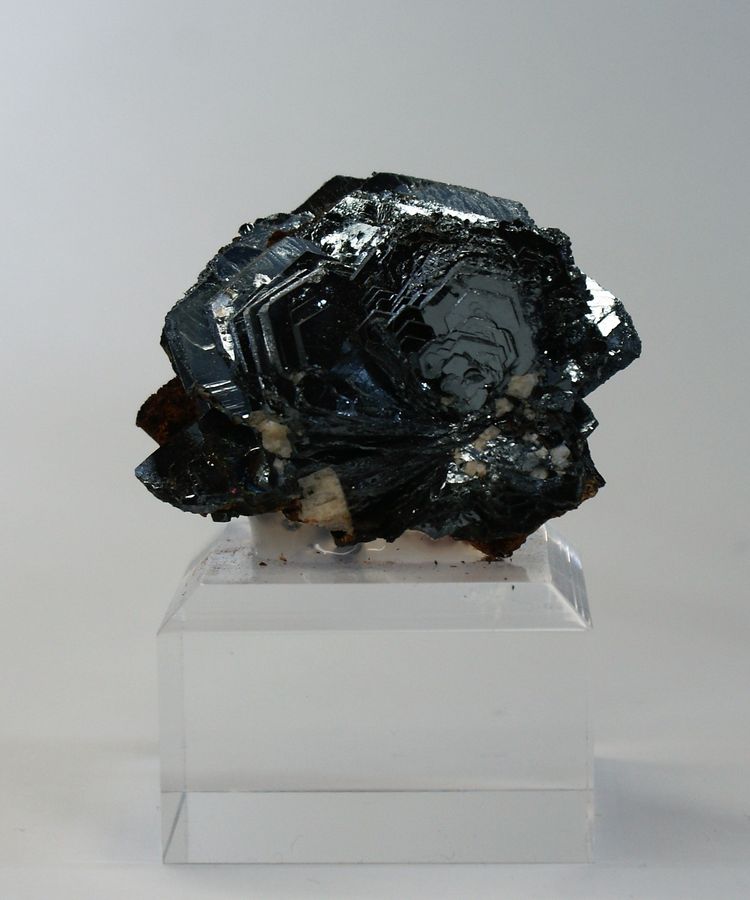
|
_________________
https://www.youtube.com/user/ptitrainrouge/videos?view_as=subscriber |
|
| Back to top |
|
 |
Tobi
Site Admin
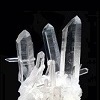
Joined: 07 Apr 2009
Posts: 4248
Location: Germany



|
 Posted: Mar 13, 2023 05:48 Post subject: Re: Collection of Philippe Durand Posted: Mar 13, 2023 05:48 Post subject: Re: Collection of Philippe Durand |
|
|
| Philippe Durand wrote: | Hematite
Ambatofinandrahana District, Amoron'i Mania Region, Fianarantsoa Province, Madagascar |
A nice piece, Philippe!
Just a small side note: Madagascar changed its administrational structure some years ago, there are no provinces anymore, they were re-structured to regions.
So in order to be politically accurate, please chance your locality information to "Ambositra District, Amoron'i Mania Region, Madagascar" which is the locality for the hematite roses from that area.
Thanks & best regards
Tobi
|
|
| Back to top |
|
 |
James Catmur
Site Admin

Joined: 14 Sep 2006
Posts: 1479
Location: Cambridge



|
 Posted: Mar 13, 2023 05:55 Post subject: Re: Collection of Philippe Durand Posted: Mar 13, 2023 05:55 Post subject: Re: Collection of Philippe Durand |
|
|
Tobi
I guess the FMF database of localities needs to be updated, as that is what he has used? We often have to do that as countries change their regions
| Tobi wrote: |
Just a small side note: Madagascar changed its administrational structure some years ago, there are no provinces anymore, they were re-structured to regions.
So in order to be politically accurate, please chance your locality information to "Ambositra District, Amoron'i Mania Region, Madagascar" which is the locality for the hematite roses from that area.
Thanks & best regards
Tobi |
|
|
| Back to top |
|
 |
Tobi
Site Admin

Joined: 07 Apr 2009
Posts: 4248
Location: Germany



|
 Posted: Mar 13, 2023 06:55 Post subject: Re: Collection of Philippe Durand Posted: Mar 13, 2023 06:55 Post subject: Re: Collection of Philippe Durand |
|
|
| James Catmur wrote: | I guess the FMF database of localities needs to be updated, as that is what he has used? We often have to do that as countries change their regions
| Tobi wrote: | Just a small side note: Madagascar changed its administrational structure some years ago, there are no provinces anymore, they were re-structured to regions.
So in order to be politically accurate, please chance your locality information to "Ambositra District, Amoron'i Mania Region, Madagascar" which is the locality for the hematite roses from that area. |
|
"Ambositra District, Amoron'i Mania Region, Madagascar" exists already in our database and can be used ;-)
|
|
| Back to top |
|
 |
Philippe Durand
Joined: 10 May 2016
Posts: 653
Location: Normandie



|
|
| Back to top |
|
 |
Philippe Durand
Joined: 10 May 2016
Posts: 653
Location: Normandie



|
 Posted: Mar 17, 2023 10:41 Post subject: Re: Collection of Philippe Durand Posted: Mar 17, 2023 10:41 Post subject: Re: Collection of Philippe Durand |
|
|
scepter :)
| Mineral: | Quartz (variety smoky) |
| Locality: | | Chibuku Mine, Zambezi Valley, Mashonaland West, Zimbabwe |  |
|
| Dimensions: | 80mm x 35mm x 42mm |
| Description: |
| the top and bottom points are amethystine, but can't see it in the photo |
|
| Viewed: |
13746 Time(s) |
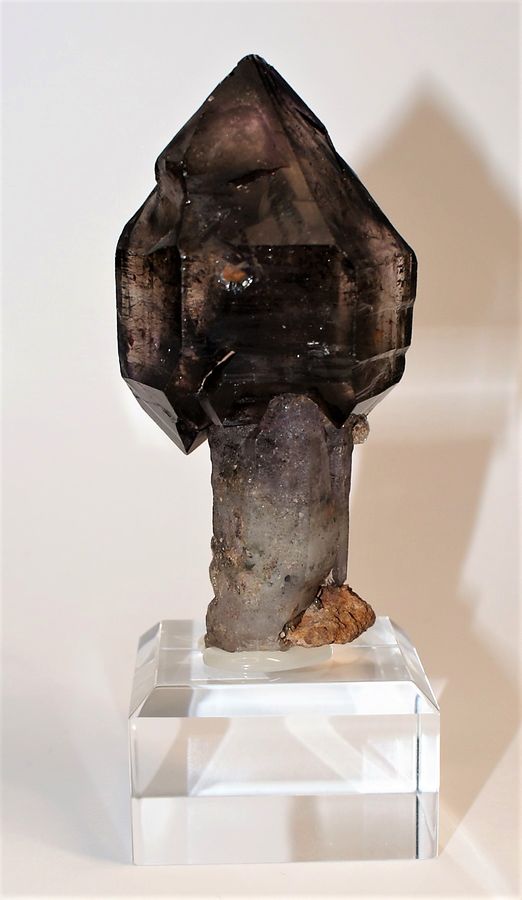
|
_________________
https://www.youtube.com/user/ptitrainrouge/videos?view_as=subscriber |
|
| Back to top |
|
 |
Philippe Durand
Joined: 10 May 2016
Posts: 653
Location: Normandie



|
 Posted: Mar 24, 2023 12:52 Post subject: Re: Collection of Philippe Durand Posted: Mar 24, 2023 12:52 Post subject: Re: Collection of Philippe Durand |
|
|
Colombia :)
| Mineral: | Quartz |
| Locality: | | Cabiche, Quípama, Boyacá Department, Colombia |  |
|
| Dimensions: | 70mm x 70mm x 25mm |
| Description: |
| the Halloysite is more yellowish than the orange of the photo |
|
| Viewed: |
13618 Time(s) |
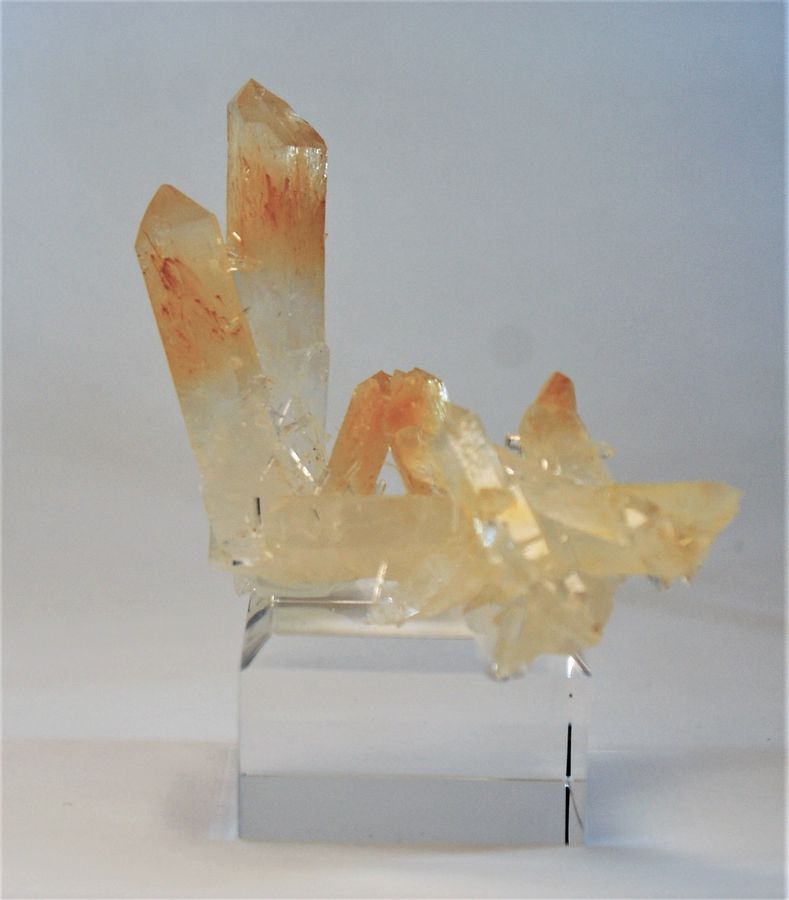
|
_________________
https://www.youtube.com/user/ptitrainrouge/videos?view_as=subscriber |
|
| Back to top |
|
 |
Dany Mabillard

Joined: 01 Jul 2019
Posts: 360
Location: Valais



|
 Posted: Apr 08, 2023 01:44 Post subject: Re: Collection of Philippe Durand Posted: Apr 08, 2023 01:44 Post subject: Re: Collection of Philippe Durand |
|
|
| Beautiful new specimens in your collection. Très belle journée.
|
|
| Back to top |
|
 |
Tobi
Site Admin

Joined: 07 Apr 2009
Posts: 4248
Location: Germany



|
 Posted: Apr 08, 2023 01:59 Post subject: Re: Collection of Philippe Durand Posted: Apr 08, 2023 01:59 Post subject: Re: Collection of Philippe Durand |
|
|
| I love the sceptre from Zimbabwe, a magnificent quartz!
|
|
| Back to top |
|
 |
minsur
Joined: 03 Feb 2015
Posts: 45


|
 Posted: Apr 08, 2023 14:27 Post subject: Re: Collection of Philippe Durand Posted: Apr 08, 2023 14:27 Post subject: Re: Collection of Philippe Durand |
|
|
| These inclusions are not Halloysite or any other mineral. Unfortunately just plain included clay, altered by acid cleaning and/or deliberate treatment.
|
|
| Back to top |
|
 |
Volkmar Stingl
Joined: 23 Sep 2012
Posts: 1002
Location: Innsbruck



|
 Posted: Apr 08, 2023 23:15 Post subject: Re: Collection of Philippe Durand Posted: Apr 08, 2023 23:15 Post subject: Re: Collection of Philippe Durand |
|
|
| minsur wrote: | | These inclusions are not Halloysite or any other mineral. Unfortunately just plain included clay, altered by acid cleaning and/or deliberate treatment. |
"Plain clay" also consists of minerals (mainly clay minerals). How can these be altered by any treatment, when they are included in quartz?
|
|
| Back to top |
|
 |
Philippe Durand
Joined: 10 May 2016
Posts: 653
Location: Normandie



|
 Posted: Apr 09, 2023 02:15 Post subject: Re: Collection of Philippe Durand Posted: Apr 09, 2023 02:15 Post subject: Re: Collection of Philippe Durand |
|
|
Thanks Dany and Tobi :)
as for Halloysite , I have already read something about that controversy
Hello Minsur, but, as Volkmar said,if the inclusions had been acid treated, that means that the quartz must be cracked enough.
with capilarity I doubt that without high pressure any liquid could go inside nano cracks from outside
but it must be proved that the quartz is cracked : I see no evidence on my specimen
do not forget as I mentioned that the right color is not this orange , but more yellow
By the way halloysite is a mineral , and yes it is a common clay and has yellowish color
And I am not sure that it can be acid modifiied, as it is commonly used in the catalyst industry as nano filter some times in acidic (refining) conditions . that means it should be very stable.
And if i read well it is a natural product of decomposition of rocks by acid waters, wirch
means it is stable too.
But as cheaters have no limits may be you are right
https://en.wikipedia.org/wiki/Halloysite
_________________
https://www.youtube.com/user/ptitrainrouge/videos?view_as=subscriber |
|
| Back to top |
|
 |
Roger Warin

Joined: 23 Jan 2013
Posts: 1242



|
 Posted: Apr 09, 2023 14:23 Post subject: Re: Collection of Philippe Durand Posted: Apr 09, 2023 14:23 Post subject: Re: Collection of Philippe Durand |
|
|
Hello,
About Halloysite.
Natural halloysite nanotubes are nanomaterials formed by the surface weathering of aluminosilicates composed of aluminium, silicon and oxygen. Unlike carbon nanotubes, halloysite clay nanotubes are inexpensive, available in quantity, environmentally friendly and easy to process. As a reminder, these are ultra-thin hollow tubes with diameters less than 100 nanometers (100 billionths of a meter) and lengths ranging from 500 nanometers to more than 1.2 microns (millionths of a meter). Halloysite is a high value clay. It is typically used in the manufacture of fine porcelain and for high-tech ceramic applications. Halloysite clay nanotubes are part of the kaolin clay family and are used in many industrial applications, particularly in the field of paints, cosmetics and pharmaceuticals. (Jean Detaille, AGAB-Minibul 2023- Vol.56(2) p.29-41.
I was surprised by the remarkable properties of halloysite, a Belgian mineral, dedicated to a great Walloon scientist. He described the geology of Northern France, and of course of Wallonia. His statue sits on a square in Namur: Jean-Baptiste Julien d'Omalius d'Alloy (born in Liege in 1783).
He discovered mineralogy at the right school, among Haüy in Paris.
Superintendent of the Circle of Dinant at the fall of the Empire, and after having been Governor of the Province of Namur (1815-1830), he ended his life as a senator (1951-1870).
Once again, these minerals which have OH groups, with moreover a texture (or structure?) in nanotubes, make relatively compatible phases which are not.
I think that with such structures, halloysite is resistant to the usual acids.
Here is the introduction to a very interesting article by J. Huang et alii.
Nanosized Tubular Clay Minerals
J. Huang, ... B.C. Guo, in Developments in Clay Science, 2016
21.1 Introduction
Halloysite has sparked considerable interest in the fabrication of halloysite polymer nanocomposites due to its unique characteristics that combine excellent mechanical properties, tubular microstructure, biocompatibility, flame retardancy and a versatile surface chemistry. To date, halloysite has been incorporated into various polymer matrices, including thermoplastics, thermosets and elastomers, to form halloysite polymer nanocomposites. The incorporation of halloysite into polymers gives rise to multiple effects on the pure polymer matrix. The mechanical performance, thermal stability and flame retardancy of clay polymer nanocomposites (CPN) can be improved compared to those of pure polymers. Moreover, halloysite can fine-tune the crystallization of the resulting CPN. For ease of processing, because halloysite is available in large quantities and can be dispersed in water and many organic solvents, halloysite polymer nanocomposites can be produced by various approaches, such as solution mixing, melt blending, in situ polymerization and spinning. The dispersion of halloysite in CPN is primarily determined by the surface characteristics and processing approaches. Generally, solution mixing and in situ polymerization can result in a CPN with uniform dispersion, whereas spinning leads to an orientation of the halloysite in the CPN.
To maximize the potential of halloysite in CPN, two factors (namely, the dispersion of the halloysite and the interfacial interactions between the halloysite and polymer matrices) play vital roles in determining the final performance of the CPN. Overall, halloysite is hydrophilic, but it is more hydrophobic than nanosilica and other layered silicates because of its lower density of surface hydroxyl groups at the outer surface, so the tube–tube interaction of halloysite is relatively weak. Therefore, it is expected that halloysite can be readily dispersed in many polymers even without modification. Halloysite can interact with polar polymers such as polyvinyl alcohol (PVA), chitosan and carboxylated rubbers via hydrogen bonding to strengthen the interfacial adhesion. However, halloysite interacts poorly with nonpolar polymers such as the polyolefins. To address this issue, various strategies such as physically wrapping halloysite with surfactants or polar macromolecules as compatibilizers, covalently grafting halloysite with coupling agents or polymer chains and charge transferring between conjugated molecules with halloysite have been explored as ways to enhance interfacial adhesion.
| Mineral: | d'Omalius d'Alloy |
| Description: |
|
| Viewed: |
13245 Time(s) |
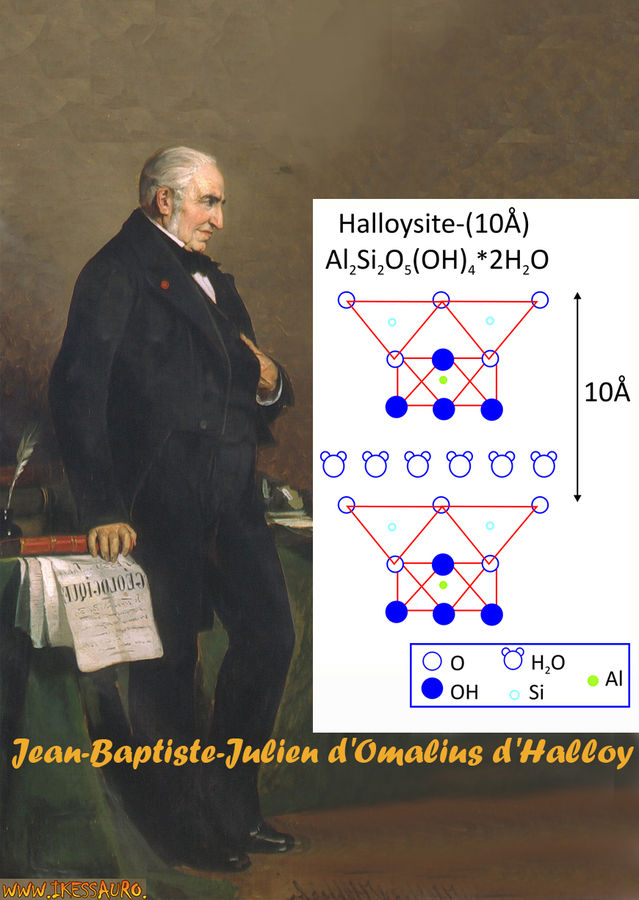
|
|
|
| Back to top |
|
 |
Bergur_E_Sigurdarson

Joined: 21 Dec 2017
Posts: 148
Location: Paipa, Colombia



|
 Posted: Apr 09, 2023 17:10 Post subject: Re: Collection of Philippe Durand Posted: Apr 09, 2023 17:10 Post subject: Re: Collection of Philippe Durand |
|
|
I have several pieces of Colombian quartz that would fall under the inclusion mentioned.
Most have "micro-tubes" along the quartz.
And usually, if they are not just "white" ... they have an opening near the top of the crystal.
When they do... they have that colouring of between an orange and all the way into the white.... depending on how long said pieces were left in acid (usually oxalic) to "clean" off most of the "crud" that they are found in.
I'm not one to say exactly what mineral is left over.... but from my observations... the Colombian quartz often referred to as "mango"... usually is just between those colours... depending on the time left in the "cleaning" process.
It's not "faking".... it's just how they are processed after being found.
I personally think they're overvalued as such... but it's a personal opinion.... looking at what I can get for my money here.
All the samples that I have that have the "desired" colour... have been given to me... as I refuse to overpay.
I've looked at them as well as others to see what is what.
And in every case... where they are of the golden colour, they tend to have "openings" near the tips.
This reinforces my opinion that those are not faked at all... but rather just partially "cleaned"... by the usual process.
Very many... most in fact... of the quartzes found in Colombia... Penas Blancas and more.. are found in a very "rusty" looking matrix or such.
I'm not overly familiar with "halloysite" as a mineral... and that may be my issue.
...overall... I do suggest caution in paying a lot for these samples... as they'e found in areas where there is plenty of quartz, and much has those "micro"tubular "inclusion.
To sum up... Colombia has awesome quartz... and the best from my perspective is the supremely clear pieces... not those with partial incusions, that may or may not be of a orange to yellow or white.... even tho some of those are very nice :-)
two pieces can be seen on my page :
https://www.mineral-forum.com/message-board/viewtopic.php?t=5386&start=40
|
|
| Back to top |
|
 |
bob kerr

Joined: 13 Nov 2011
Posts: 638
Location: Monroeville PA



|
 Posted: Apr 09, 2023 18:53 Post subject: Re: Collection of Philippe Durand Posted: Apr 09, 2023 18:53 Post subject: Re: Collection of Philippe Durand |
|
|
As some additional support for Bergur's thoughts - one of the main dealers who handles these mango quartzes lost a ton of money by leaving them in oxalic for too long - the acid slowly cleaned out the micro channels leaving a clear quartz with white tips - no color. it was a sad day for his dealership - he learned the hard way and now watches the specimens as they "clean".
As Bergur mentioned: " these are not faked at all... but rather just partially "cleaned.""
caveat emptor
bob
|
|
| Back to top |
|
 |
|





